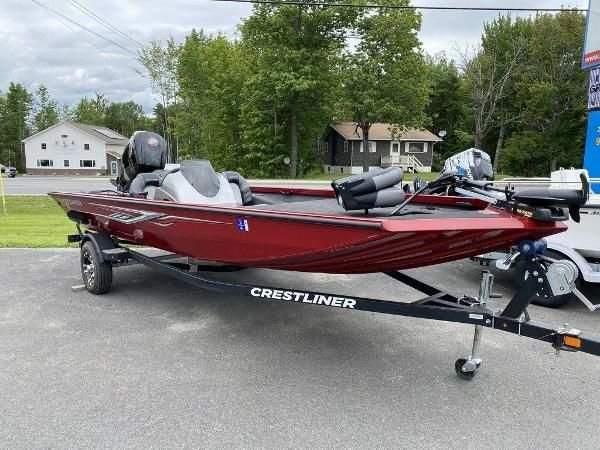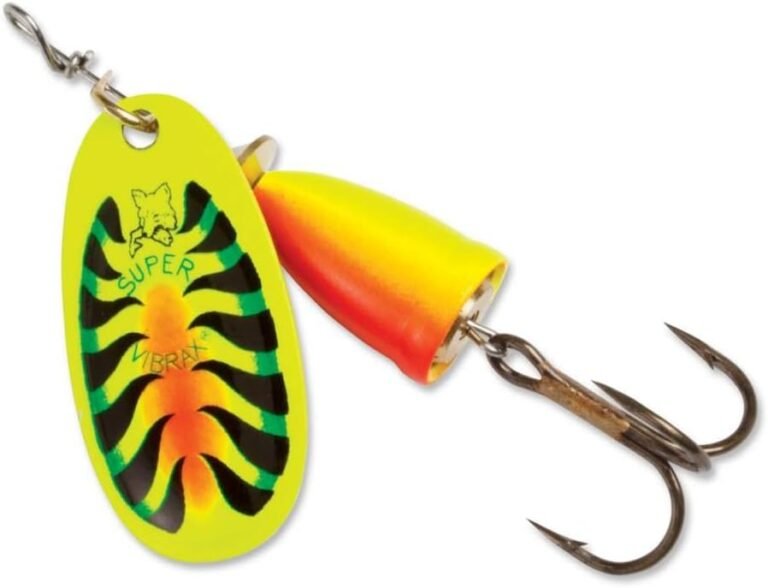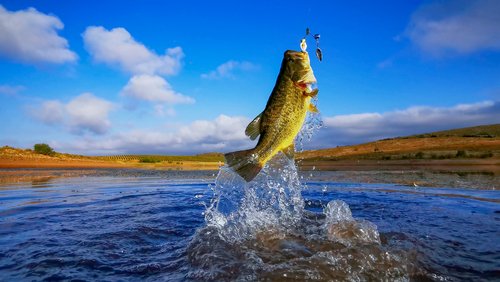The Minnesota bass fishing scene has several species that inhabit its waters. The three main types of bass found in Minnesota are largemouth, smallmouth, and spotted bass. Let’s go get ’em!
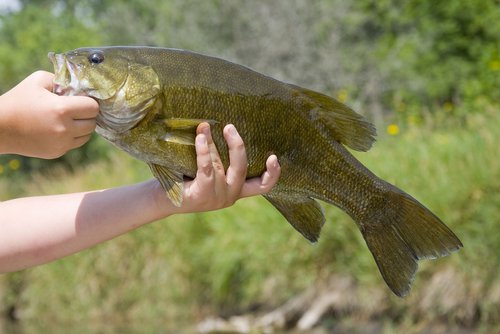
Each species has distinct characteristics, behaviors, and preferred habitats that dictate their feeding patterns and tendencies. Knowing how to differentiate between these species will greatly enhance your chances of success on the water.
Understanding their feeding habits, preferred depths, seasonal migrations, and even subtle differences in lure preferences can make all the difference between a productive day on the water and coming back empty-handed.
Moreover, accurately identifying each species is essential for adhering to fishing regulations and conservation efforts, ensuring the long-term sustainability of bass populations in Minnesota’s waters.
Minnesota’s reputation as a premier bass fishing destination is well-deserved. Its vast array of lakes and rivers, combined with a commitment to conservation, create an angler’s paradise.
Minnesota Bass Fishing
Largemouth Bass
Largemouth bass are one of the most sought-after fish species in Minnesota. They are characterized by their large mouths and olive-green coloration, which helps them blend in with the vegetation in their surroundings.
Largemouth bass can grow to impressive sizes, with some individuals reaching lengths of over 20 inches and weights exceeding 8 pounds. They have a stout body shape with a broad tail fin, allowing them to generate powerful bursts of speed when hunting prey.
Preferred habitats for largemouth bass in Minnesota include freshwater lakes, reservoirs, and slow-moving rivers with ample vegetation such as weed beds, lily pads, and fallen trees. These habitats provide good hiding spots for ambushing prey and protection from predators.
Largemouth bass are most active during dawn and dusk and tend to be more aggressive while feeding. Various fishing techniques can prove effective when targeting largemouth bass in Minnesota.
Anglers often rely on casting lures such as plastic worms or swimbaits near underwater structures where these fish seek shelter or wait for their prey. Topwater lures like poppers or buzz baits can also be successful during low-light conditions when largemouth bass are more likely to strike at surface baits.
Smallmouth Bass
Smallmouth bass, often called “smallies,” are another prized species among anglers fishing in Minnesota’s waters. Unlike its largemouth cousin, smallmouth bass display a distinctive bronze coloration with vertical dark bars along its sides. They have a streamlined body shape equipped for agility rather than raw power like the largemouth.
Smallmouth bass prefer clear or slightly turbid waters with rocky bottoms like lakes, rivers, and streams. They thrive in areas with ample structures, like rock piles, submerged boulders, and drop-offs.
Once hooked, these fish are known for their strong fighting ability, often leaping out of the water to shake off the lure or bait. When targeting smallmouth bass in Minnesota, anglers often rely on casting lures that imitate their natural prey.
Crankbaits, jerk baits, and soft plastics like tubes or grubs can be effective choices. Additionally, live bait such as nightcrawlers or crayfish can yield excellent results when fishing for smallmouth bass.
Spotted Bass
Spotted bass are less prevalent in Minnesota’s waters than largemouth and smallmouth bass. However, they can occasionally be found in certain lakes and rivers within the state.
Spotted bass share some similarities with largemouth bass but have distinct characteristics that set them apart. These fish exhibit a dark greenish coloration with rows of spots along their lateral lines, hence their name “spotted” bass.
They have a slightly more elongated body shape than largemouth bass but lack the pronounced vertical bars seen on smallmouth bass. While spotted bass are not as widespread in Minnesota’s waters as other species of black bass, they can be found in limited numbers within select river systems and reservoirs.
Anglers who encounter spotted bass usually do so while targeting other species like smallmouth or largemouth. Techniques for catching largemouth or smallmouth tend to work for spotted bass since they share similar habitat preferences and feeding patterns.
Lake Mille Lacs
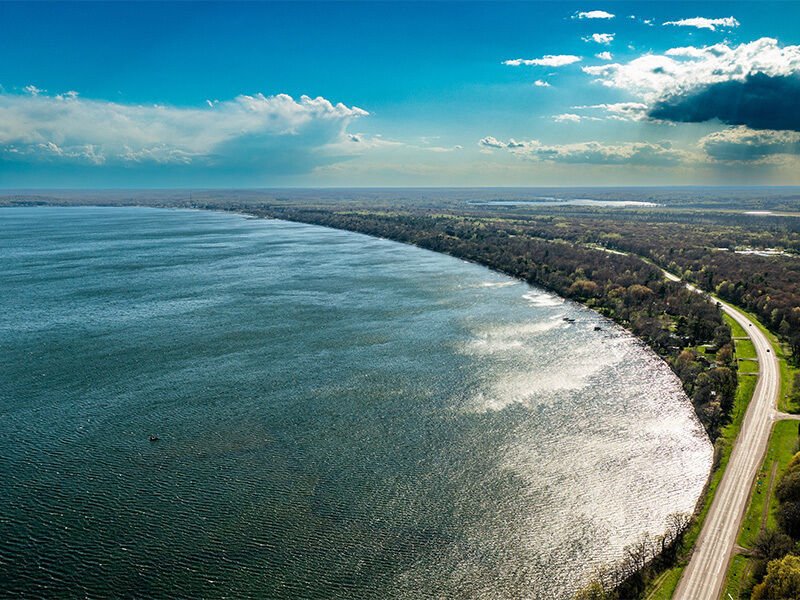
Lake Mille Lacs is a true gem for bass fishing in Minnesota. Located in the central part of the state, this stunning lake covers an impressive area of 132,516 acres. Known for its immense depth, it reaches a maximum depth of around 42 feet. One unique feature that makes Lake Mille Lacs special is its diverse shoreline, consisting of rocky outcrops, submerged vegetation beds, and sandy flats.
Abundance of largemouth and smallmouth bass
Anglers visiting Lake Mille Lacs are in for a treat as this lake boasts healthy populations of both largemouth and smallmouth bass. The clear waters provide optimal conditions for these species to thrive. Whether you prefer targeting largemouth or smallmouth bass, you can expect exciting action and opportunities to reel in trophy-sized specimens.
Best fishing spots, tactics, and recommended lures
When searching for prime fishing spots on Lake Mille Lacs, focus on areas with rocky structures such as points, drop-offs, and underwater ledges. For largemouth bass enthusiasts, target the shallow, weedy bays and submerged vegetation beds along the shorelines. Recommended lures include soft plastic worms, or creature baits rigged Texas-style or on a shaky head jig.
Lake Minnetonka
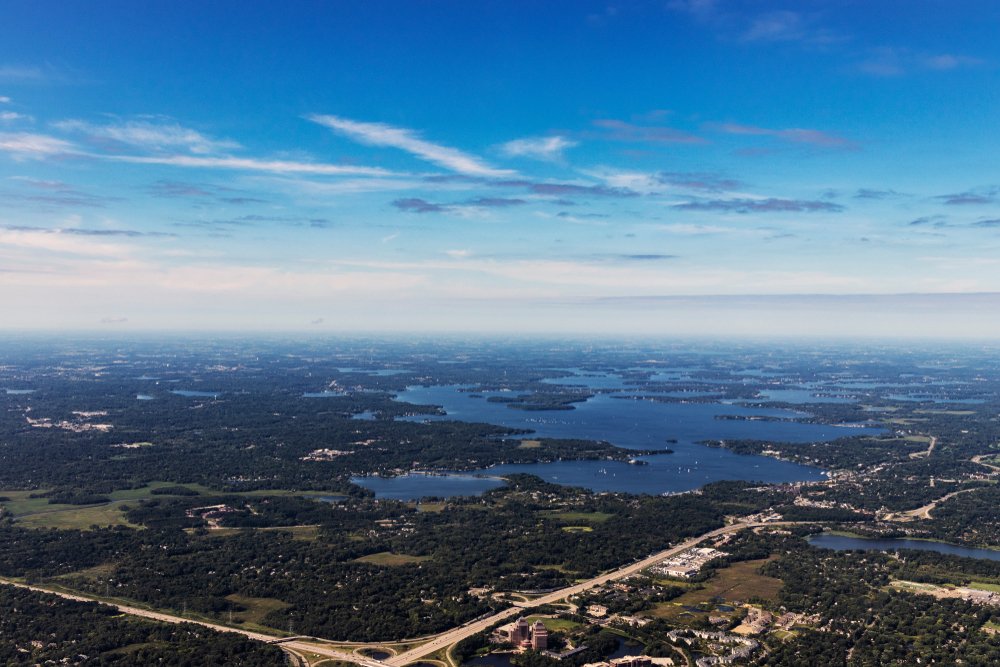
Situated just west of Minneapolis-St. Paul metropolitan area lies Lake Minnetonka – an angler’s paradise characterized by its diverse structure and abundant vegetation cover.
This sprawling lake spans roughly 14 thousand acres with numerous bays interconnected by channels, creating a labyrinthine experience for fishing enthusiasts. Lake Minnetonka is home to a wide variety of aquatic vegetation, including dense milfoil beds, lily pads, and submerged weed lines.
Presence of largemouth and smallmouth bass populations
Lake Minnetonka is renowned for providing opportunities to catch largemouth and smallmouth bass. The lake’s ample structure and vegetation offer ideal habitats for these species. Largemouth bass can often be found lurking around the weed edges or relating to submerged structures, while smallmouth bass tend to inhabit rocky areas such as points, reefs, and sunken islands.
Tips for successful fishing on Lake Minnetonka
Adjusting your tactics based on the prevailing conditions is crucial to maximize your success on Lake Minnetonka.
Start by exploring areas with abundant vegetation cover like emerging weed beds or lily pads using topwater baits such as buzz baits or frogs during the early morning or late evening hours. As the day progresses and the sun rises higher in the sky, consider transitioning to fishing deeper structures using finesse techniques like drop shot rigs or jigging with soft plastics.
Lesser-Known Gems for Bass Fishing Enthusiasts
Leech Lake

Located in north-central Minnesota, Leech Lake is a true haven for bass fishing enthusiasts. Spanning over 110,000 acres, this vast lake offers many opportunities for anglers seeking an unforgettable fishing experience.
Its impressive depth, reaching 150 feet in some areas, creates a diverse structure attracting largemouth and smallmouth bass. The lake is dotted with rocky shorelines, submerged vegetation, and extensive weed beds that serve as ideal habitats for these prized gamefish.
Opportunity to catch trophy-sized largemouth or smallmouth bass
Leech Lake boasts a reputation for producing trophy-sized largemouth and smallmouth bass. Anglers flock to this hidden gem, hoping to land their personal best.
The lake’s rich biodiversity supports healthy populations of both species, making it an excellent destination for those seeking quantity and quality catches. With careful tactics and patience, anglers can reel impressive specimens weighing over five pounds.
Conclusion – Minnesota Bass Fishing
For Minnesota bass fishing, Leech Lake stands out as one of the lesser-known gems that deserve more recognition. Its vastness and diverse structure create an ideal ecosystem for both largemouth and smallmouth bass to thrive. Anglers can engage in exciting battles with trophy-sized fish while immersing themselves in the stunning natural beauty surrounding the lake.
Whether you are a novice angler or a seasoned pro, exploring the waters of Leech Lake will undoubtedly leave you with cherished memories and a renewed passion for bass fishing. So grab your gear and embark on an unforgettable adventure on this hidden treasure trove – Leech Lake awaits!

